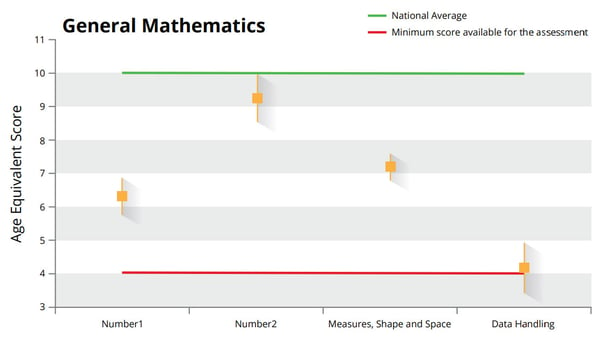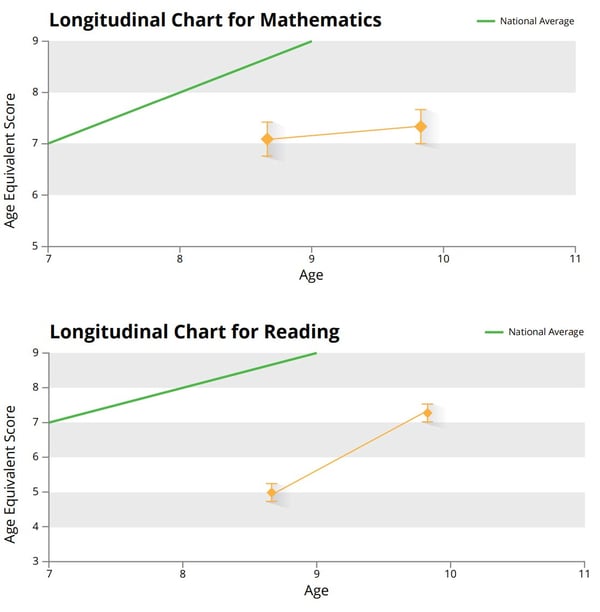Case Studies / Primary SEND Support
Sam
Using Insight to support children with Special Educational Needs
(InCAS has now evolved into Cambridge Primary Insight)
Find out more.
Meeting every individual need
Sam is a bright 10-year-old, who loves space, stars, planets and computer games. He doesn’t always enjoy school and struggles quite a bit in the classroom with concentration, self-regulation and low self- esteem.
Sam has had an Education, Health and Care Plan (EHCP) since he was diagnosed as being on the autism spectrum in Year 2. He has a particular and severe sensory aversion to the feel of paper, which makes handwriting and recording work extremely difficult.
Sam attends a small mainstream school in the North East of England. In his new Year 5 class there is no learning support assistant. Classes have split year groups, but are smaller than average with 25 children in a class. As a part of his EHCP, Sam uses sand timers to build up his concentration and has several sessions with a specialist per term to learn and practise strategies for improving his self- regulation in the classroom.
Sam is faced with questions that are both achievable for him and with just the right amount of challenge”
Understanding what works for Sam
Previous assessment results have been wide-ranging and inconsistent for Sam because so many factors can influence his performance. This has made it difficult to gain an accurate picture of his academic abilities, making planning and setting appropriate targets quite tricky.
Sam’s end-of-year reports have consistently shown from KS1 that he has not met the age-related expectations set out by the government.
Sam’s school started to use Cambridge Primary Insight last year to identify each individual’s development needs, personalise learning and track their students’ progress across the school. The assessment not only covers reading, spelling, mathematics and mental arithmetic, but also looks at developing ability and attitudes.

Benefits of using Cambridge Primary Insight
Each assessment module only takes 20 minutes on a computer and can be spread across as many days as needed. Sam enjoys completing the tasks independently, and can usually concentrate for the majority of the time required. More importantly, because the test is adaptive, Sam is faced with questions that are both achievable for him and with just the right amount of challenge to keep his interest.
The computer-based nature also means that for Sam, the anxiety caused by the feel of paper is no longer a barrier. Sam is calmer and able to focus on answering the questions so his results are a more accurate representation of his actual ability.
Unveiling hidden strengths
Cambridge Primary Insight has been designed to give a holistic view of a child’s abilities and feedback is given in various forms. A quick table view shows a child’s actual age and their age-equivalent scores in Reading and General Mathematics.
| Age | Reading | General Maths |
| 9:10 | 7:3 | 7:3 |
A child of 8 would be expected to have an age equivalent score of 8, a 9-year-old would have a score of 9 and so on.
Sam’s age-equivalent scores are significantly below his actual age. As a snapshot from his assessment, this is a good indication of his current abilities and a clear starting point.

To get a deeper understanding of Sam’s results, his teacher can then look at the feedback from the Scores Charts. Scores Charts break the results down into the different subsections within the assessment.
The yellow box represents the age equivalent score and the lines above and below are the confidence intervals. The length of the vertical yellow lines show the range of scores Sam may have achieved on a different day, based on the consistency of his answers.
The Scores Chart reveals that Sam is working at very different levels across the General Mathematics subsections.
To a teacher who knows Sam well, it is no surprise that he scores highly on questions relating to patterns. For his new teacher, the Scores Chart provides valuable evidence and helps form their own judgment.
Scores Chart information is valuable in planning effectively, whether it be in-class modelling and scaffolding place value questions or designing a 1-to-1 intervention to focus on data handling.
These assessment scores are objective and can be used as evidence alongside teacher judgement in requesting the resourcing of additional support.
Helping to set targets
A more detailed picture of Sam’s learning emerges from the feedback given in the Longitudinal Charts.
Longitudinal Charts also allow Sam’s teachers to quickly see how much progress he has made since he last took the assessment.
Looking at the Longitudinal Chart for Mathematics, the gradient between the plotted points shows that Sam has made only the equivalent of a couple of months’ progress in the year since he last completed the assessment.
This can be compared to the gradient of the Longitudinal Chart for Reading, which we can see is much steeper. This is roughly equivalent to a 2-year gain in just over 12 months, which is quite dramatic progress for Sam.
This is a reassuring indication that the targets and interventions that have been put in place have greatly benefited his learning. His new class teacher can seek advice, replicate and develop the resources used to ensure that this progress continues.
This also indicates that the focus of target setting could be around increasing his progress in Maths.


Next Steps Guidance
- The feedback has given Sam’s new teacher useful insight into his current abilities as well as the progress he achieved in the last year. The next steps are:
- Using the Scores Charts to give Sam clear targets to work towards that can be included in his EHCP.
- Implementing interventions for particular areas in maths. Given support, Sam has the potential to increase his progress to that of his reading.
- Discussing with Sam’s previous teacher their methods used to help his reading and ensure methods are put in place for continuation of progress.
Want to know how Cambridge Insight data can help in your school?
Find out more about our assessments

